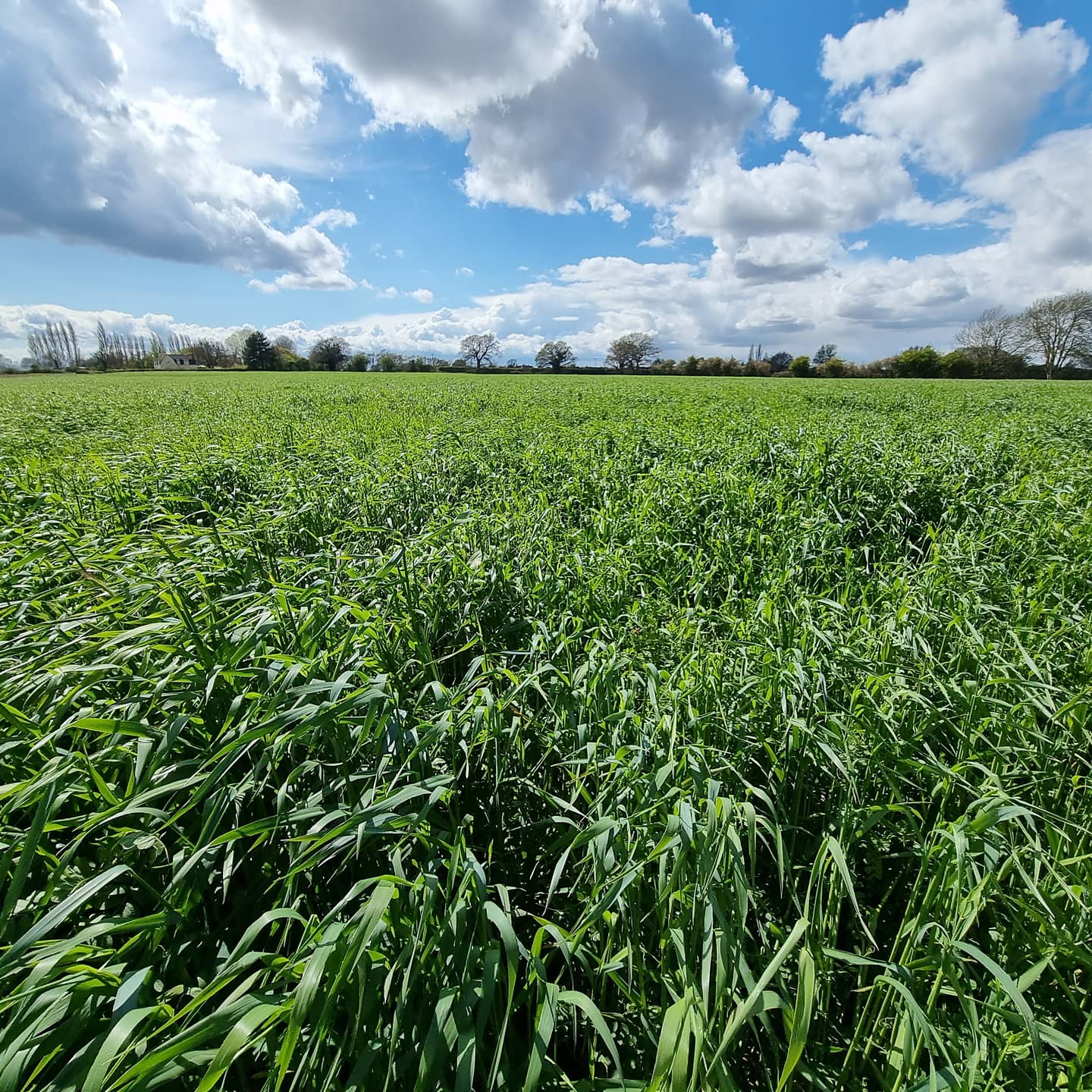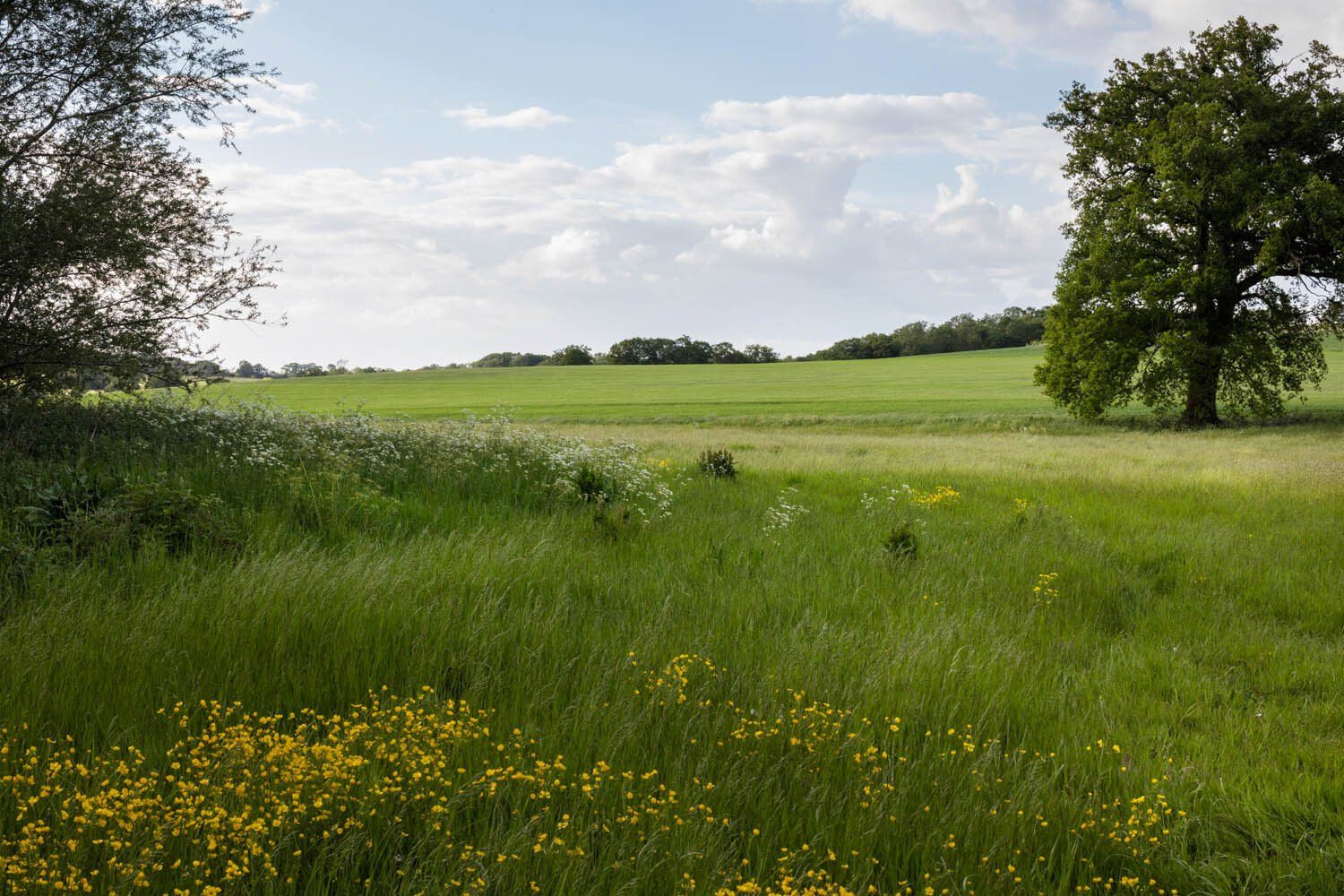Nature Friendly Farming
Pete Thompson and his family have farmed their small corner of Essex for generations, but despite working tirelessly to make space for nature, he knew in his gut that something wasn't quite right.
Here Pete describes his ongoing journey into regenerative farming and agroforestry, a journey he hopes will return the farm to the glories of the past, whilst simultaneously making it more resilient in the future.
As a farmer of 700 odd acres (50:50 owned / rented) with a relatively profitable (increasingly rare) vegetable growing business, some would wonder why we want to take land out of production for wilding. It’s a good question. In response to the ‘but don’t we need more food, not less’ question the answer is we need more food in the right place. That is in areas of malnutrition and not in the bins of the relatively well off. The answer is: also that if we are to continue to produce enough food, we need to produce it sustainably. The rest of the answer is more complex.
As a typical multi-crop market gardening business in the 80’s we were not big enough to jump on the supermarket bandwagon and had the option of selling up, switching to a one man arable operation or getting lucky. Fortunately we landed on the latter, specialising for a particular niche market. We reduced the number of crops from 20 to 2, improved productivity, invested for efficiency and survived and even grew.
But the feeling has grown that something isn’t working. The brook I played in as a child is no longer home to frogs and tiddlers, the dawn chorus lost it’s volume and the insects on the land rover windscreen disappeared. In more recent years we noticed our fields, many once dairy pasture, multi-cropped with veg since the 40’s don’t quite have the vigour of old. The Turtle Doves disappeared.
Do I look at the past with rose tinted specs? Certainly I was privileged to grow up playing in those places, with two grandfathers who were thinkers as well as farmers. The farm of my maternal grandfathers in Weeley was something out of a famous 5 novel with animals of every size and shape. More importantly he had a gut feeling that the ‘green’ revolution of agrichemicals and fertilisers wasn’t all it was cracked up to be. He was ahead of his time and it wasn’t until a recent visit to the Knepp Estate that I was emotionally transported back to a childhood place of such diversity of wildlife. It is brilliant to see now my cousin and his family picking up the baton and restoring life and biodiversity he would be proud of. Mum carried that care for nature forwards and we always made sure a place was kept for wildlife on our farm. The reservoirs my father built were considered the heart of our own nature reserves and I’m sure are one reason why, with more recent changes, we have seen wildlife return quicker than we could have hoped.
Our approach, as has to be the case on a farm, is multi-faceted. We are broadening our existing conservation sites and linking them up with habitats on our farm and neighbouring farms using the Ramsey Brook and it’s tributaries as the skeleton of widening habitats. On a farm scale we had increased our rotation through renting in more land and putting arable rotations onto our own land. However while nominally good for the land it doesn’t appear to be delivering benefits. So we have dropped the arable and instead introduced fallow and cover crops. This gives our soil a proper rest and has a positive effect on the soil. Cover crops improve the soil physically, chemically and biologically and crucially store more carbon. We are at the start of a transition into regenerative horticulture but after just one cover crop we can see the improvement in the soil.
At the moment we destroy and incorporate cover crops, but something is missing. Before we or our ancestors walked this land it would have been grazed by herds of herbivores, predated by varying carnivores. We hunted the land, enclosed the land and then ‘specialized’ the land. Even the numbers of rabbits are in decline and the largest herbivore is a passing immigrant Muntjac. We know that nature, if un-touched by man, is incredibly complex. Nature created eco-systems inter-dependent on life of every scale above ground and below ground. We are only beginning to understand life below ground. So when much of the media is dominated by the need to reduce meat and veganism, it is challenging to realise that the only way we can sustainably produce vegetables from our land is to reintroduce large herbivores and therefore engage with meat production. I don’t for a second advocate industrial production of meat raised on imported grains or pulses, that is not natural. But grazing passing herds, spending all year on pasture has a role to play. As Michael Pollen would say, “Eat food, mainly plants”.
Just increasing our wild areas, planting a few orchards, linking habitats and allowing multiple habitats to return by letting the wild take over has begun to reverse a decline. Last year we saw Turtle Doves back on the farm, the year before we saw Otters for the first time in generations. Barn, Tawny and Little Owls frequent the farm and we have a plethora of water birds, too many to mention. It feels like life is returning but it is small steps. As our journey into regenerative farming and with agroforestry projects being introduced we hope now to accelerate a journey back into the past, and future.
For biodiversity, our climate and the health of our food production and therefore our own, we need to seek out a different way of farming. In mind it is quite simple, we need to restore complexity. So simple complexity, allowing the nature to lead us rather than trying to dominate it or defeat it.
WildEast Blog

Powered by LocaliQ
Follow Us
SIGN UP FOR NEWS & UPDATES
Newsletter Sign Up
Thank you for signing up to our newsletter.
Please try again later.
Privacy / Terms & Conditions / Sitemap



